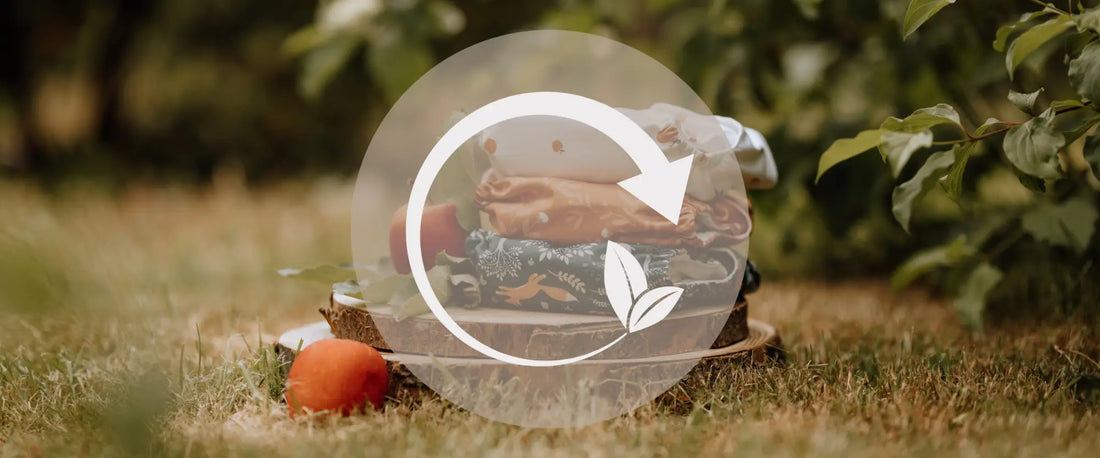
Reduce waste: Environmental benefits of cloth diapers
Did you know that your choice of diapers can have a significant environmental impact?
Here, we explore how cloth diapers can help reduce waste by up to 95% while making a difference for the climate. By choosing cloth diapers, you make a sustainable choice for both your family and the future.
Waste reduction compared to disposable diapers
Disposable diapers generate an enormous amount of waste:
• A child uses an average of approximately 6,920 disposable diapers over three years.
• Each diaper, filled with liquid, weighs about 300 grams, meaning a child generates about 2.1 tons of waste during their diapering years.
In Sweden and many other countries, disposable diapers are primarily handled through incineration for energy recovery. While this reduces the amount of waste, the plastics and other fossil components in the diapers contribute to CO2 emissions.
Additionally, used diapers often contain liquid absorbed by superabsorbents, which reduces the efficiency of the incineration process.
In other parts of the world, where landfills are still common, disposable diapers can take up to 500 years to decompose. This contributes to long-term environmental issues and waste accumulation.
Cloth diapers make a difference:
• Reusable and can be used by multiple children, eliminating the need to constantly produce new diapers.
• After several years of use, some diapers may need replacement, but the total waste is reduced by up to 95%.
Cloth diapers can often be passed on to 1–2 additional children, further reducing the need for new production and waste.
Consider this:
If you stack the disposable diapers used during one child's diapering years, they would create a pillar approximately 69 meters tall – as high as a 23-story building! It would take 11 full-size waste containers to handle all this waste. That’s a lot of garbage!
Water and resource use for disposable diapers
The production of disposable diapers involves significant water and energy use, particularly for the various materials used:
• Cellulose: Production requires up to 1,500 liters of water per kg, a substantial part of the total water use.
• Plastic components: For polyethylene and polypropylene, used in the diaper’s outer layer, approximately 1,850 liters of water per kg are needed during production.
• Superabsorbents: These account for about 10% of the diaper’s weight and require about 900 liters of water per kg.
In total, producing disposable diapers for one child (approximately 6,920 diapers) uses several thousand liters of water – a resource that literally ends up in the trash after use. This also involves large amounts of energy and raw materials that are never reused.
Consider this:
Energy: Producing disposable diapers for one child’s diapering years requires about 500 kWh of energy – enough to power a nightlight every night for 15 years.
Cloth diapers: An alternative that makes a difference
Cloth diapers are designed to be reused for many years. By choosing a reusable product, you reduce the need for new production and therefore the total water and energy consumption.
• Our cloth diapers are made from recycled polyester combined with bamboo and cotton, creating a durable and long-lasting product.
While washing requires resources, the water used at home re-enters the water cycle through the sewage system. This differs from industrial water use, which often negatively impacts ecosystems.
Consider this:
Doesn’t it feel better to invest in something that can be used over and over again rather than wasting resources to produce disposable products that are thrown away after just a few hours of use?
Conclusion: A sustainable investment for the future
By choosing cloth diapers, you can not only reduce waste by up to 95% but also lower your carbon footprint and conserve resources. Small choices can make a big difference – for you, your family, and the future.

